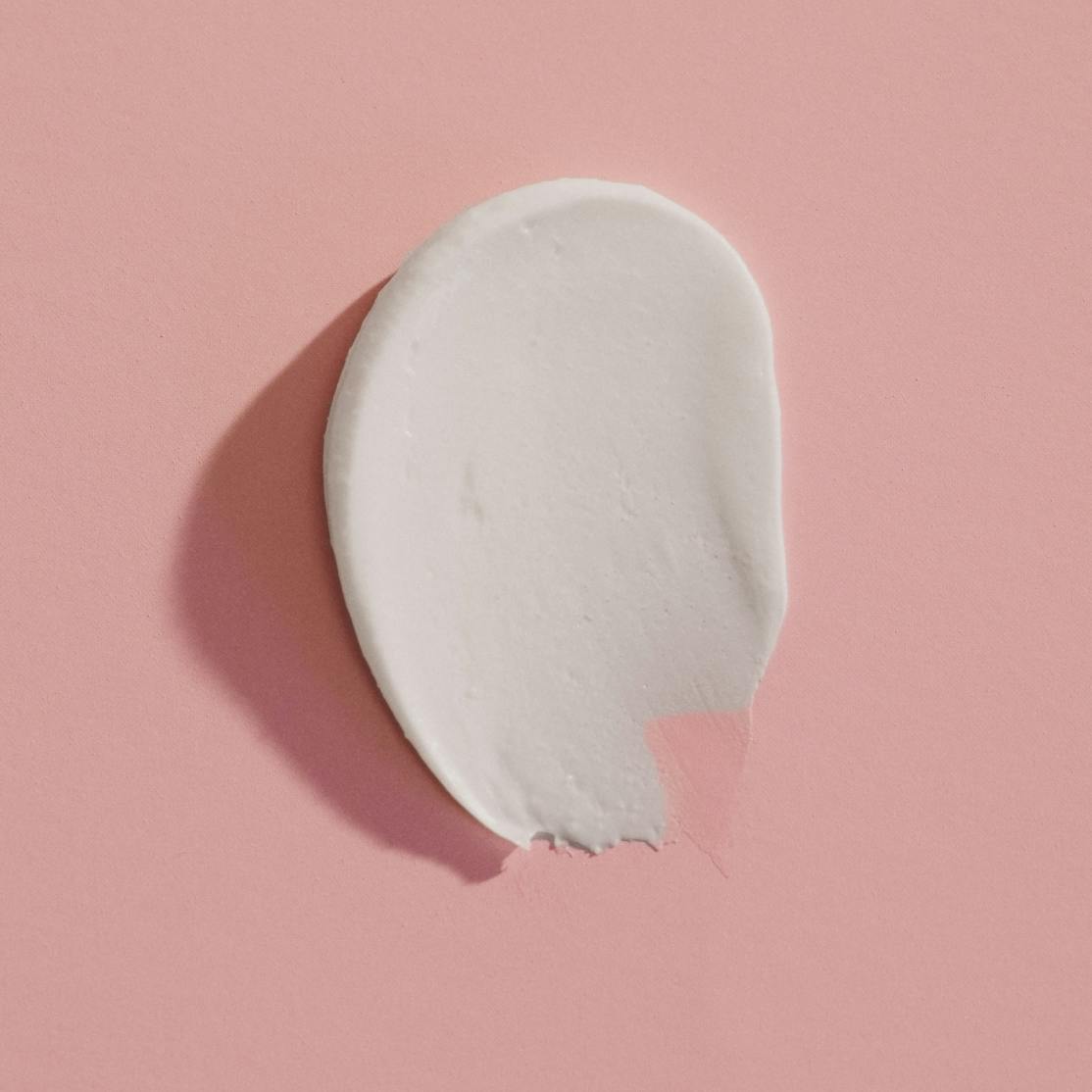Hormonal changes during menopause can cause vaginal dryness that can cause discomfort, make sex painful, and increase your risk of urinary tract infections (UTIs). It’s an issue that many women don’t talk about, but there’s a simple solution: vaginal estrogen. We’ll explain how it works and how it differs from traditional hormone replacement therapy (HRT).
Let's talk about something that doesn't get nearly enough airtime: vaginal dryness during menopause. We know, we know—it's not exactly dinner-party conversation, but here's the thing: If you're experiencing it, you're definitely not alone.
"Women don't bring it up to their clinician because they're embarrassed, so there's a whole problem of not asking for help with issues that vaginal dryness can cause, like itching and burning and painful sex," says Kathleen Jordan, MD, Chief Medical Officer at Midi Health.
And get this: In one study of more than 2,400 women, 34% of those over 57 years old were dealing with vaginal dryness—yet half never even mentioned it to their doctors, and only 4% actually sought treatment. That's a lot of silent suffering.
"That's why, at Midi, we actively ask patients: ‘Do you have this problem?’ Talking about it normalizes it, because it is normal," adds Dr. Jordan. So let's dive into why this happens and, more importantly, what you can do about it. Spoiler alert: A surprisingly simple solution can help.
What Is Vaginal Estrogen?
Here's the deal with menopause and vaginal dryness: It's mostly about your estrogen levels taking a nosedive. When estrogen drops, your body produces less natural lubrication, and your vaginal tissues become thinner and less elastic—basically making them crankier and prone to irritation. There's even an official medical name for this whole situation: genitourinary syndrome of menopause (GSM).
Enter vaginal estrogen, your potential new best friend.
"It helps replace some of the estrogen you have lost—and that can greatly reduce dryness, as well as increase skin elasticity," explains Dr. Jordan.

Now, this isn't your drugstore lubricant we're talking about. This is the real deal, a prescription medication that comes in three forms: cream, suppository (or inserts), or ring. It delivers a targeted dose of estrogen that gets absorbed directly where you need it most.
Your options:
- A cream that’s applied directly to the vaginal tissues. You initially need to use them daily, then only twice a week or as needed.
- Suppositories, inserts, or tablets that are placed inside the vagina. These also usually require daily use for the first couple of weeks, then you can scale back.
- A ring that's placed into the vagina (you can do this at home, or your healthcare professional can do it for you) and delivers a steady dose of estrogen that lasts for around 90 days.
And if the word “estrogen” worries you at all, know that numerous studies suggest that this treatment is safe and effective.
“It’s even safe for most breast cancer survivors,” says Dr. Jordan. “And it’s one of the easiest, most accessible, affordable quick fixes you can get for this issue—that can be life-changing.”
More good news: Vaginal estrogen is often covered by insurance. Even if you're paying out of pocket, a tube of cream usually runs from around $8 to $35, depending on your insurance.
Vaginal estrogen differs from systemic hormone replacement therapy (HRT) in several ways. First, it delivers a smaller amount of estrogen. And it affects only local tissue. HRT, on the other hand, has body-wide effects. (This is what makes vaginal estrogen a potentially good option for cancer survivors who have vaginal dryness.)

Also, vaginal estrogen boosts moisture and elasticity. It’s not meant to impact other symptoms of menopause, such as hot flashes, night sweats, and brain fog—symptoms that HRT can address, in addition to helping with vaginal dryness. Dr. Jordan notes that some women do both vaginal estrogen and systemic HRT.
Symptoms Vaginal Estrogen Can Help Relieve
Ready for the good news? Vaginal estrogen can come to your rescue for common menopause concerns, including:
- vaginal dryness and itching
- painful intercourse (aka as dyspareunia)
- frequent urinary tract infections (UTIs)
- urinary urgency and incontinence
- vaginal burning or discomfort
How Midi Helps
Key Benefits of Vaginal Estrogen

Here's where things get even better. Vaginal estrogen doesn't just slap a bandage on the issue—it actually helps restore things to their happier, pre-menopause state. It can:
- improve vaginal lubrication and comfort
- restore vaginal lining thickness and elasticity
- support a healthy vaginal microbiome and pH balance
- reduce the risk of UTIs
- enhances sexual comfort and function
Is Vaginal Estrogen Safe?
Dr. Jordan is quite emphatic about this: Vaginal estrogen is safe. The dose is low, and the effects stay local rather than traveling throughout your whole body. A major study that followed women in the well-known Nurse's Health Study for 18 years found zero increased risk of cardiovascular disease or cancer, compared with the risk in women who didn't use vaginal estrogen. The researchers concluded: "Our findings lend support to the safety of vaginal estrogen use, a highly effective treatment for genitourinary syndrome of menopause."
If you’ve done some research on vaginal estrogen, you may have seen that it carries a Food and Drug Administration (FDA) boxed warning. It sounds alarming, but it’s not. In 2003—based on outdated research on the impact of estrogen on various health conditions, such as cancer and heart disease—the FDA announced that all products containing estrogen would carry a boxed warning about the possible impact of the drug.
But here’s the thing: There’s no evidence that vaginal estrogen may be harmful. And recently, there’s been a call among some experts to have the warning (known as a "black box") removed from products like vaginal estrogen. But as with any medication, it’s important to consult with your doctor to make sure it’s appropriate for you and your menopause symptoms.
How to Use Vaginal Estrogen
Using vaginal estrogen is pretty straightforward, though each type has its own rhythm:
Cream: Start with daily applications for several weeks. After that, you will dial back the frequency as things improve.
Suppository or tablet: Use one daily for about 2 weeks, then you may only need it every 2 to 4 days for maintenance.
Ring: The set-it-and-forget-it option! Once it's in, you're good for 3 months before switching to a fresh one.
The timeline for results? You might start feeling better within days or weeks, though sometimes it takes up to 6 months to see the full benefits.

Alternatives and Complementary Options
Vaginal estrogen isn't your only option, though it's often the most effective. You might also try:
- nonhormonal vaginal moisturizers and lubricants with hyaluronic acid for immediate relief
- staying well-hydrated (your whole body will thank you)
- pelvic floor exercises to boost circulation down there
- vitamin E, which some studies suggest may improve skin elasticity
If you're dealing with other menopause symptoms like hot flashes, night sweats, or brain fog, you might want to explore systemic HRT as well. Remember, you can do both. Vaginal estrogen and HRT can be combined so you feel better, head to toe.
Key Takeaways
- Vaginal estrogen is a fantastic solution for women dealing with vaginal dryness but not necessarily other menopause symptoms. It's targeted, effective, and safe, and it won't break the bank.
- The key differences from HRT: Vaginal estrogen works locally (just on vaginal and bladder tissues) while HRT affects your whole body. Both have their place, and some women use both.
- Vaginal estrogen is a prescription that comes in a cream, suppository, or ring. Insurance often covers it, and it’s inexpensive in some forms, even if you have to pay out of pocket.
- The amount of estrogen in vaginal estrogen products is low, and studies have found it to be a safe and effective way to improve the symptoms of vaginal dryness.
Frequently Asked Questions (FAQs)
What does inserting estrogen do?
Since estrogen naturally drops during menopause (thanks, Mother Nature), vaginal estrogen helps pick up the slack. It improves lubrication and makes your vaginal tissues healthier and more elastic—basically helping things feel more like their old selves.
Does taking estrogen make you wetter?
Yep! But this isn't like grabbing lubricant from the pharmacy aisle. Vaginal estrogen creates longer-lasting changes that help your body produce its own moisture again.
What are the benefits of estrogen in females?
Beyond the obvious comfort improvements, you're looking at fewer UTIs, better sex, and less trouble with incontinence or unexpected leaks. Pretty great perks!
What are the beauty benefits of estrogen?
While some doctors say it's okay to use vaginal estrogen cream as an anti-ager on your face, neck, hands, and other areas, Midi recommends using a gentler formulation of topical estriol that's designed to be used on delicate facial skin and can help add moisture and improve skin elasticity and firmness.
If you’re in perimenopause or menopause and want guidance from clinicians who specialize in women’s midlife health, book a virtual visit with Midi today.
Hormonal change is at the root of dozens of symptoms women experience in the years before and after their period stops.
Our trained menopause specialists can help you connect the dots to guide you towards safe, effective solutions.
Whether you need personalized guidance or a prescription routine to tackle symptoms—including brain fog, hot flashes, sleep trouble, mood swings, and weight gain—we’ve got you covered. Learn more here.
Midi’s mission is to revolutionize healthcare for women at midlife, wherever they live and whatever their health story. We believe that starts with education, to help all of us understand our always-changing bodies and health needs. Our core values guide everything we do, including standards that ensure the quality and trustworthiness of our content and editorial processes. We’re committed to providing information that is up-to-date, accurate, and relies on evidence-based research and peer-reviewed journals. For more details on our editorial process, see here.







